Estimated reading time: 07 minutes and a half.
January/2015 - The EF Extender 2X III is a teleconverter that mounts between you camera and your EF compatible lens to effectively multiply its focal length by two. It does that simply enlarging 25% of the middle of your frame, discarding most of the light; thus reducing two stops of exposure (a f/2.8 becomes a f/5.6). All other optical atributes remain intact: depth of field, bokeh, minimum focusing distance… But there’s a visible optical impact and any optical flaw will also be multiplied.
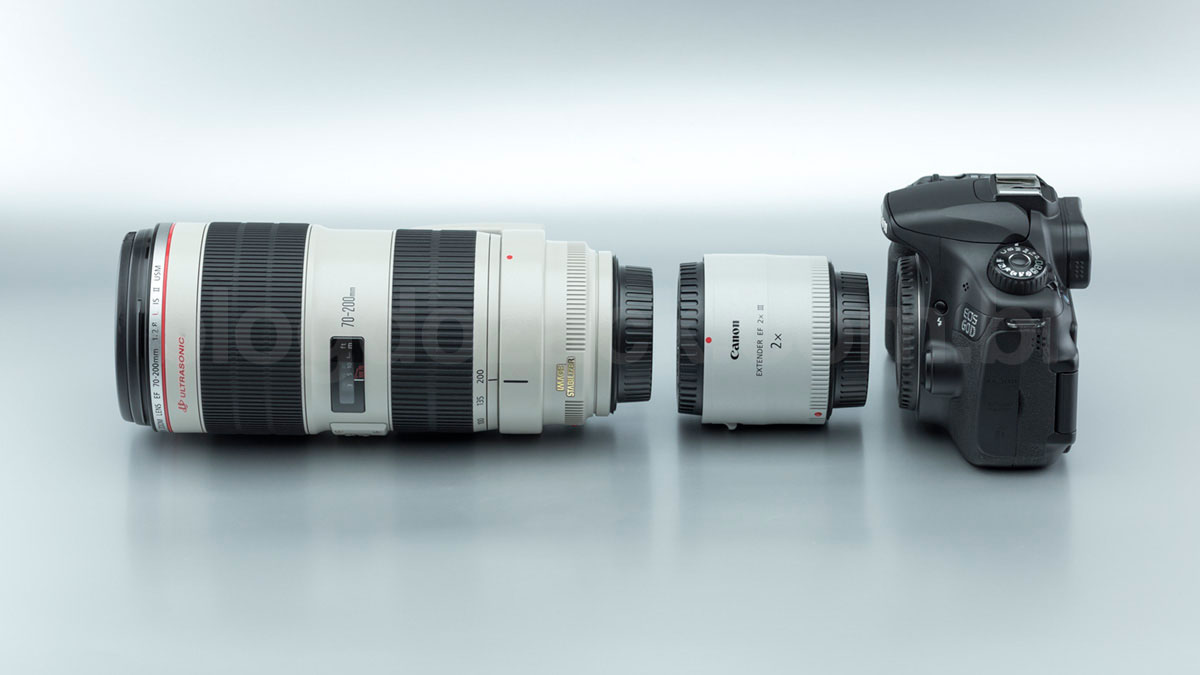
Focusing speed is deliberately reduced by 75% to compensate for the shorter travelling distance to keep focusing precise. And some combos which the resulting aperture is larger than f/8, for instance the EF 100-400mm f/4.5-5.6L IS USM that becomes a 200-800mm f/9.5-11, no EOS body will auto focus using its phase detector; not even the f/8 limited 1D and 5D Mark III (other cameras are f/5.6 limited). But it works during Live View using the slow contrast detection.
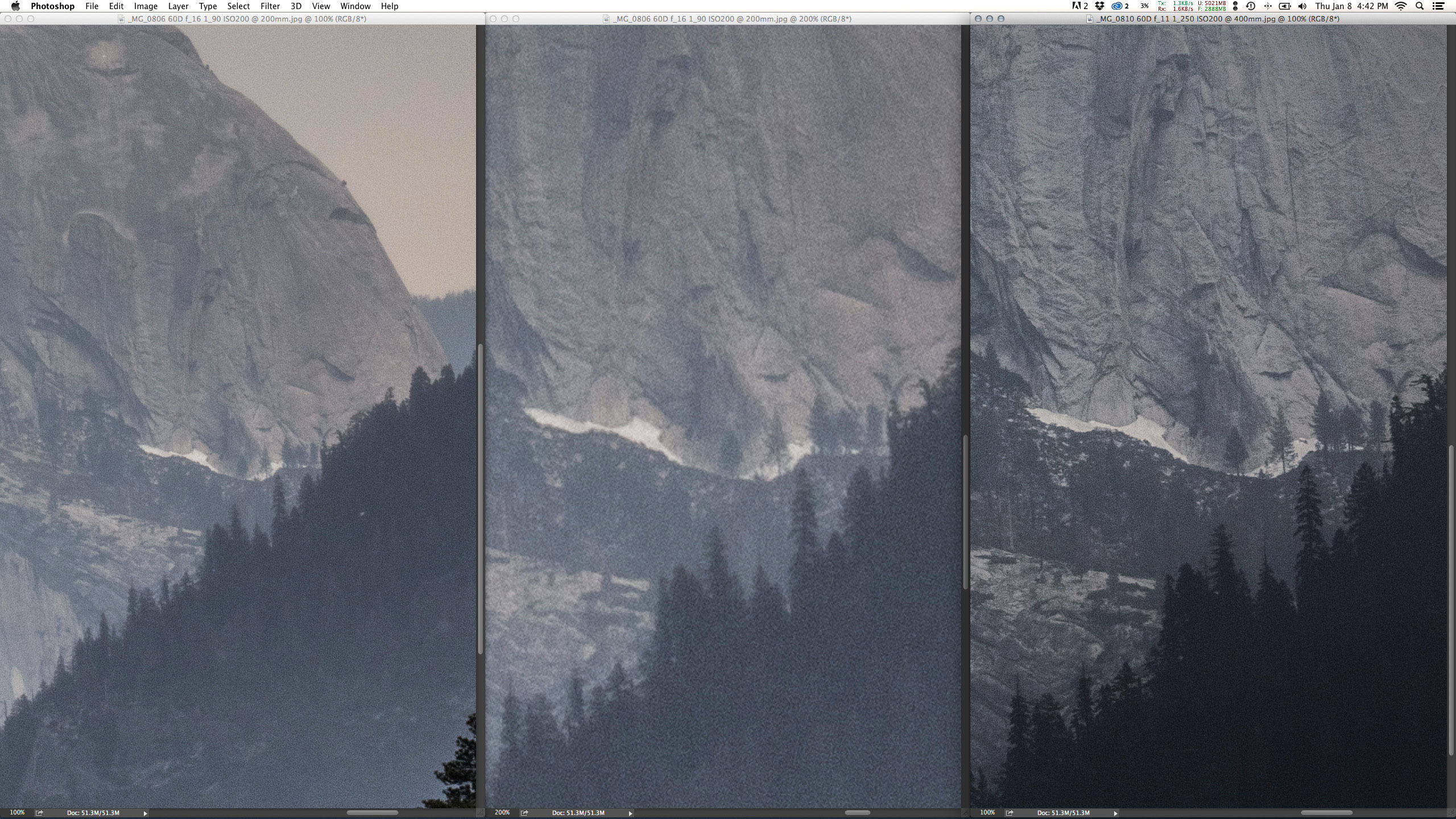
EOS 60D + EF 200mm f/2L IS USM: original f/16 1/90 ISO200 (left), digital interpolation (centre), with Extender 2X III f/11 1/250 ISO200 @ 400mm (right)
It arrived at vlog do zack right after its launch in 2011, and the US$449 price tag made sense instead of buying a new telephoto lens. Stopping down one or two stops effectively raises the image quality to excellent levels on most top of the line lenses, much better than digital interpolation. And as it’s easy to use, fits any backpack, and can be with you at all times. It’s an accessory for those who work with telephoto lenses; when we can’t be near our subjects; don’t want to carry larger lenses; or even to multiply the ratio of macro optics. Is it worth your money? Let’s find out!
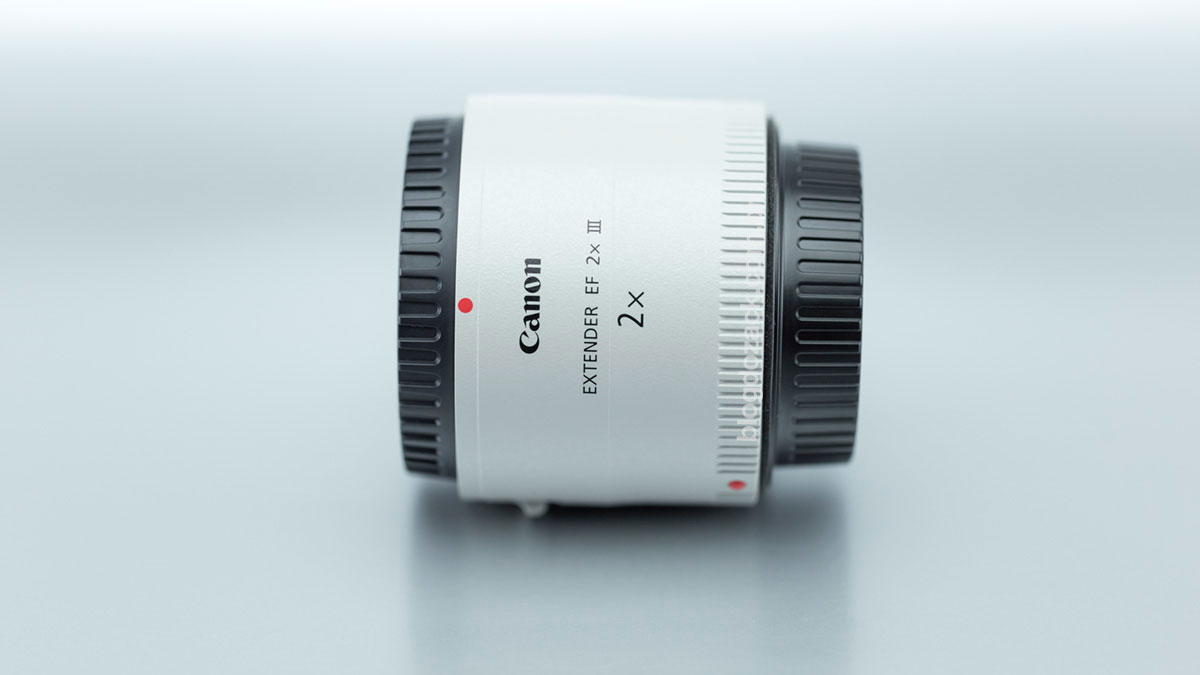
At 325g of nine elements in five groups, just 52mm short, the EF Extender 2X III is extremely compact and light with a solid, all metal built. It couldn’t be otherwise: it will sit between several thousand dollars lenses and cameras after all. The white colour complement the top of the line L series lenses, the most compatible in general, and the weather sealing extends the coverage against water and dust of the lens and your compatible camera body.
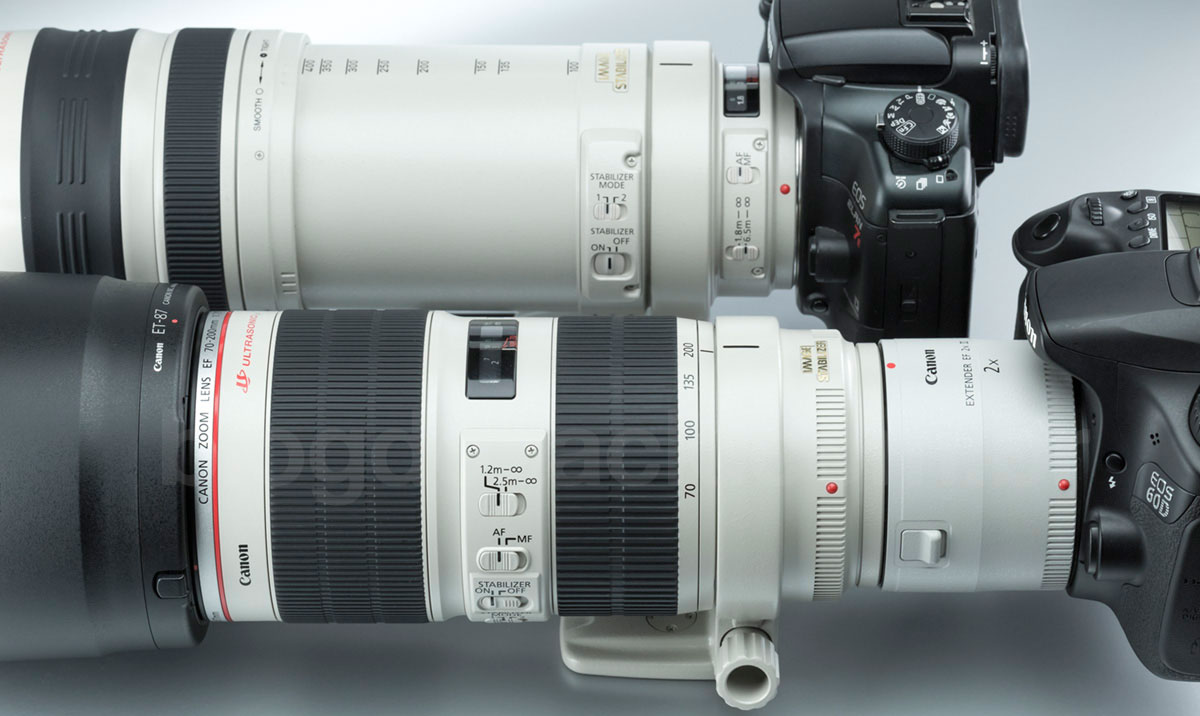
At the front the optical element extends almost 5mm from the mount requiring the lens to be mounted with a deep rear element; mostly zooms or primes L telephotos. A list with all compatible lenses can be found at this link. That explains the rubberised piece, so it won’t damage (much) the mounted lens if you’re bad at aligning them. An extension tube can fit the extender on non-compatible lenses, or even allow multiple extenders stacked together! But Canon doesn’t recommend it and can’t guarantee the AF precision or the mechanical strength of all pieces.

On an everyday basis, the use is very simple and it’s recommended you mount the extender on your lens first, then the whole thing on your camera to register the correct focal length. It mounts perfectly on both sides and nothing wobbles, spins out of place or make noises. It’s very tight, all metal. Some lenses get too long, so be advised: if its too heavy, hold your camera by the lens, not by the body. When it’s time to unmount, the metal switch is smooth and quick.
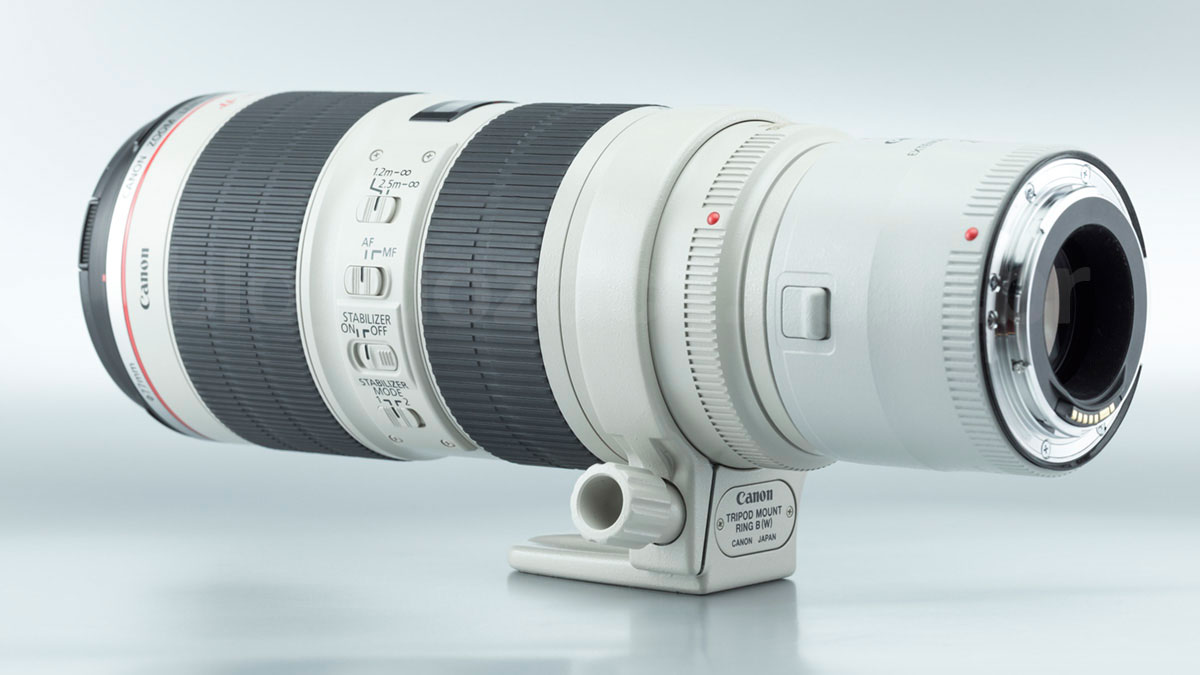
About auto-focusing performance, you know I don’t photograph action to give a faithful opinion on how fast it is with the extender mounted. But Canon deliberately declares the EF 2X III reduces focusing speed by 75% in order to keep the precision intact, as the lens elements need a shorter travelling distance to get the subject in focus. Unfortunately most EOS bodies are capped at f/5.6 for phase detection, or f/8 for professional 1D and 5D Mark III models, so it’s a problem with small aperture lenses like f/4 (that become f/8) and f/5.6 (becoming f/11). So in most cases you’re stuck at manual focusing only. But contrast detection during Live View remains active.
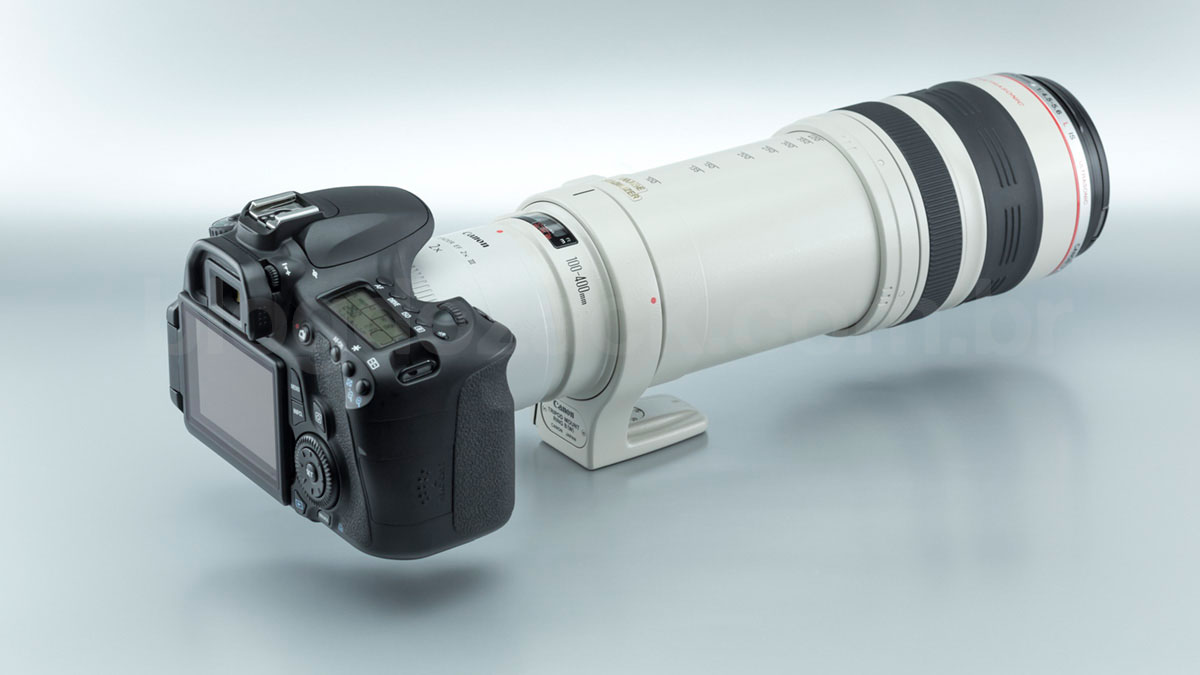
The front and rear elements are fluorine coated to make cleaning easy, as newer top of the line L lens. Why the EF Extender 2X III isn’t an L piece? And inside the Super Spectra coating reduces ghosting and flare, together with anomalous dispersion elements to completely eliminate chromatic aberration, at least from the extender. But what’s the IQ impact after conversion?
The optical principle behind teleconverters is very simple. It takes the image center and magnifies it back to the same projection circle. And with this, any pre-existent optical flaw will be magnified as well. So on high performance lenses, like large aperture primes or high end zooms at optimised stops, the IQ impact is minimum. But wide open and less than perfect lenses, the lack of resolution is very noticeable depending on how you’ll use the files (think large prints). If you need the extra light and quality, stick to native lenses as they provide better results.
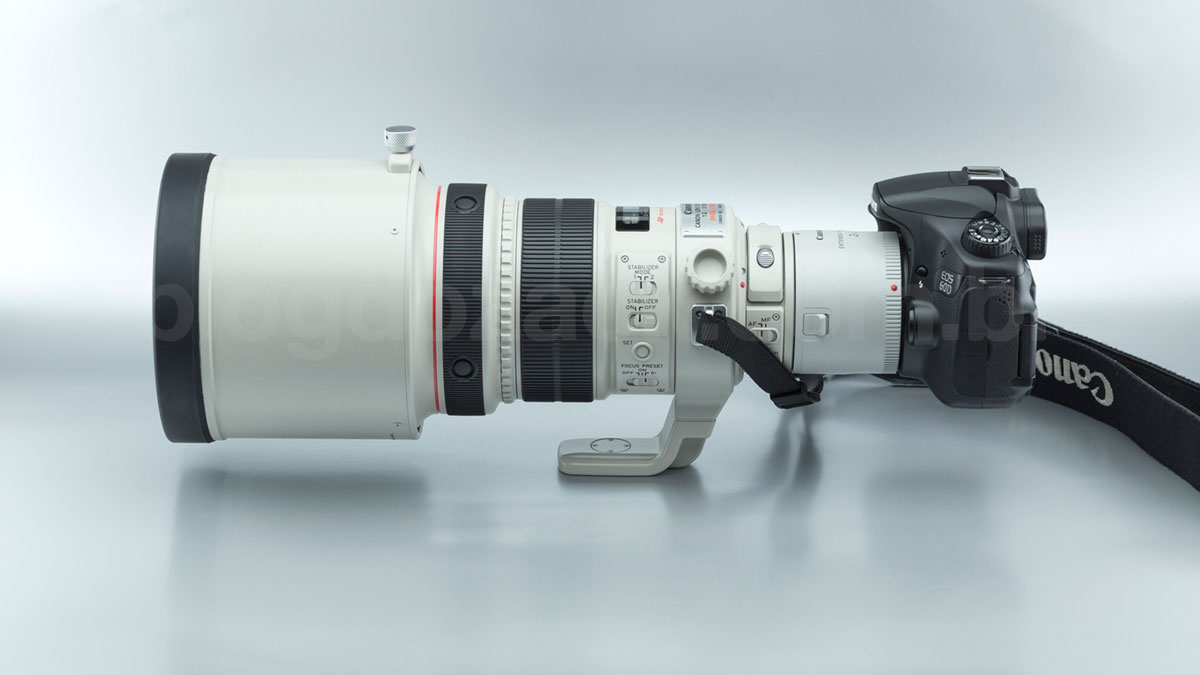
This fantastic prime was my first lens to suggest the EF Extender 2X III purchase. Considering its high quality optics and 400mm f/4 conversion, the same spec as the EF 400mm f/4 DO IS USM, it was my first experiment above 300mm, that I’ve had used on the EF 70-300mm f/4.5-5.6 IS DO USM zoom (not compatible with extenders). Wide open and the converted prime lacks contrast and sharpness. Stopping down to f/8 they’re higher, with acceptable resolution levels. But it won’t substitute the native 400mm distance if you use it too much, or plan on printing the files.

Left: EF 200mm f/2L IS USM + Extender 2X III at f/4 1/3000 ISO200 @ 400mm. Right: EF 100-400mm f/4.5-5.6L IS USM at f/5.6 1/1500 ISO200 @ 400mm. Wide open, the 400mm zoom is much better than even the converted top prime.
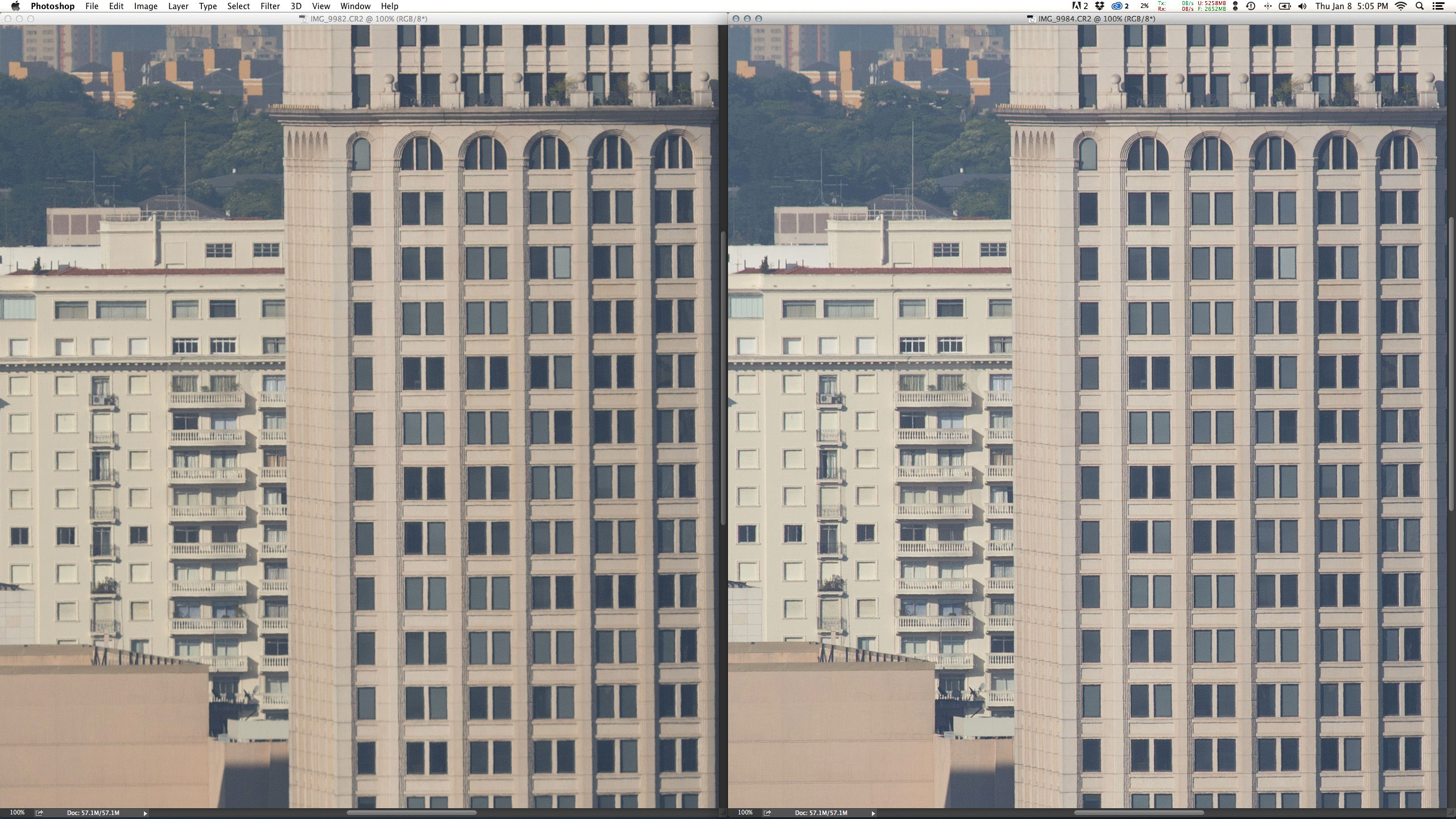
Left: EF 200mm f/2L IS USM + Extender 2X III at f/8 1/750 ISO200 @ 400mm. Right: EF 100-400mm f/4.5-5.6L IS USM at f/8 1/750 ISO200 @ 400mm. At f/8 the prime is much sharper, but the zoom is still ahead.
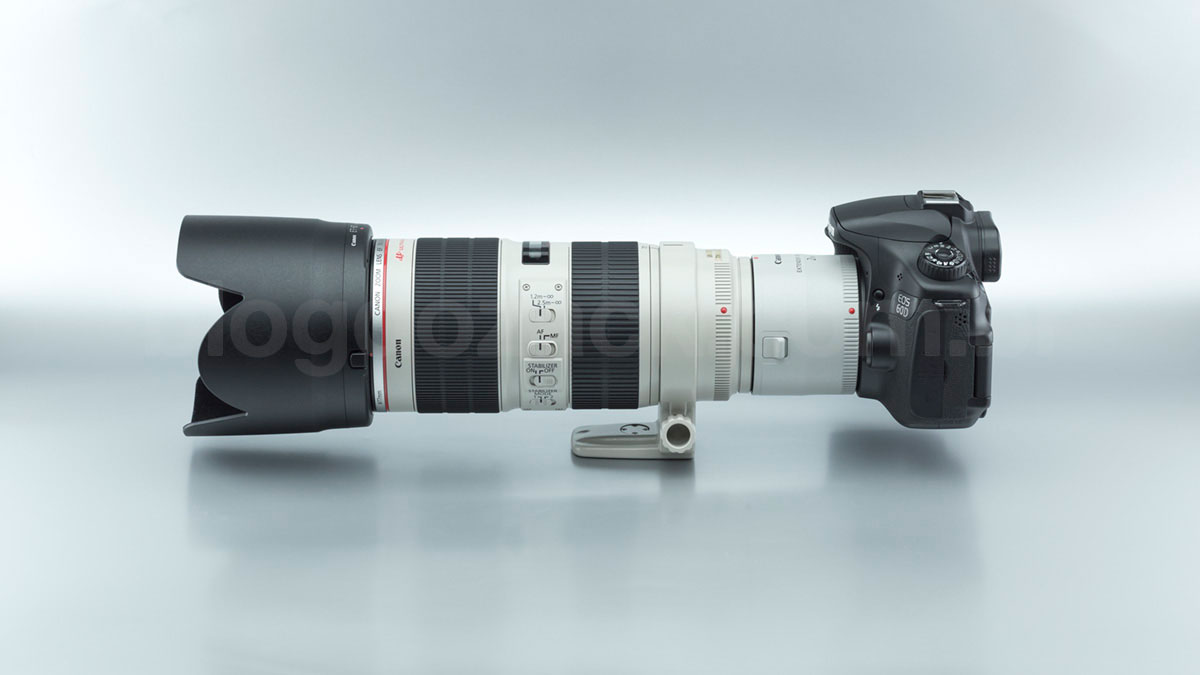
My second lens used with the 2X III, justifying the EF 100-400mm f/4.5-5.6L IS USM purchase afterwards. This 70-200mm zoom also lacks resolution and sharpness wide open at f/5.6; although it’s not as bad at f/8. But it’s easy to tell both files apart: 70-200mm 2X or 100-400mm. But remember the Extender doesn’t affect the four stops IS nor the 70-200mm weather sealing, absent from the old EF 100-400mm f/4.5-5.6L IS USM. So it’s totally worth it if you use the 400mm distance sporadically, not for professional usage, or can’t afford the Mark II.

Left: EF 70-200mm f/2.8L II IS USM + Extender 2X III at f/5.6 1/1000 ISO400 @ 400mm. Right: EF 100-400mm f/4.5-5.6L IS USM at f/5.6 1/750 ISO400 @ 400mm. As a matter of a fact, the zoom performance is higher than the 200mm f/2 prime wide open, both with the extender. It is usable for some applications.
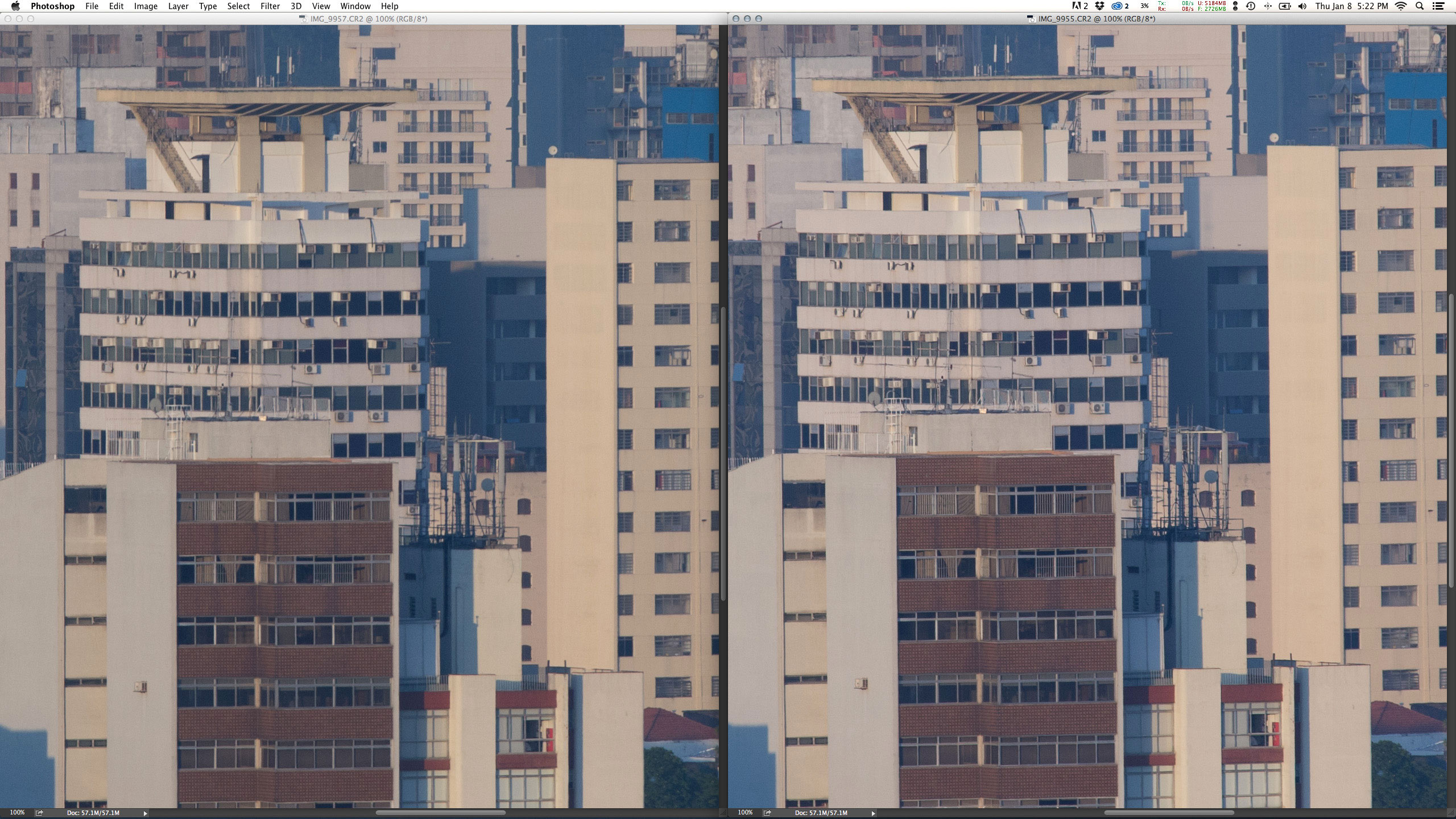
Left: EF 70-200mm f/2.8L II IS USM + Extender 2X III at f/8 1/500 ISO400 @ 400mm. Right: EF 100-400mm f/4.5-5.6L IS USM at f/8 1/500 ISO400 @ 400mm. At f/8 the 70-200mm + 2X III improves its resolution and sharpness, but so does the 100-400mm, always in front.
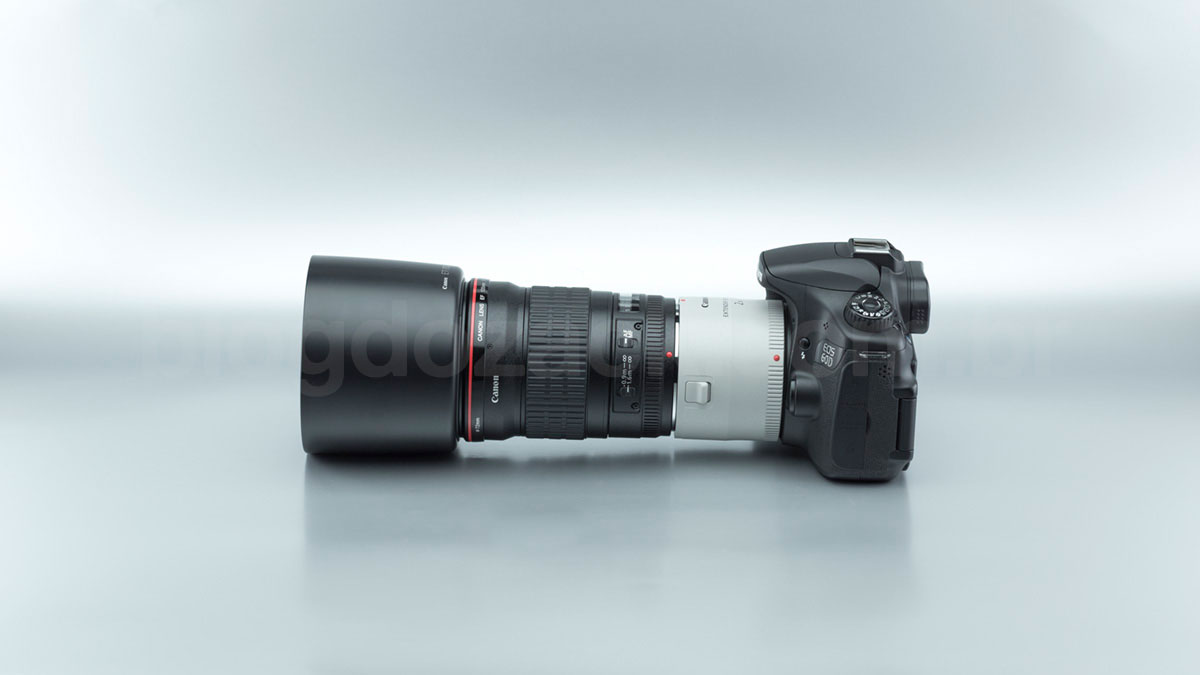
Another fantastic prime lens that is compatible with the EF Extender 2X III, giving an exotic 270mm f/4; almost like the EF 300mm f/4L IS USM. The 135mm performance is so high that the same 200mm f/2 figures apply: on perfect primes, the magnification will also be near perfect. But the old 135mm project doesn’t use any modern coatings to enhance contrast wide open, so a visible “bloom” can be seen at 270mm. The resolution is there and you can fix the contrast by software. Stopping down to f/8 and the results are very impressive, as most primes are.
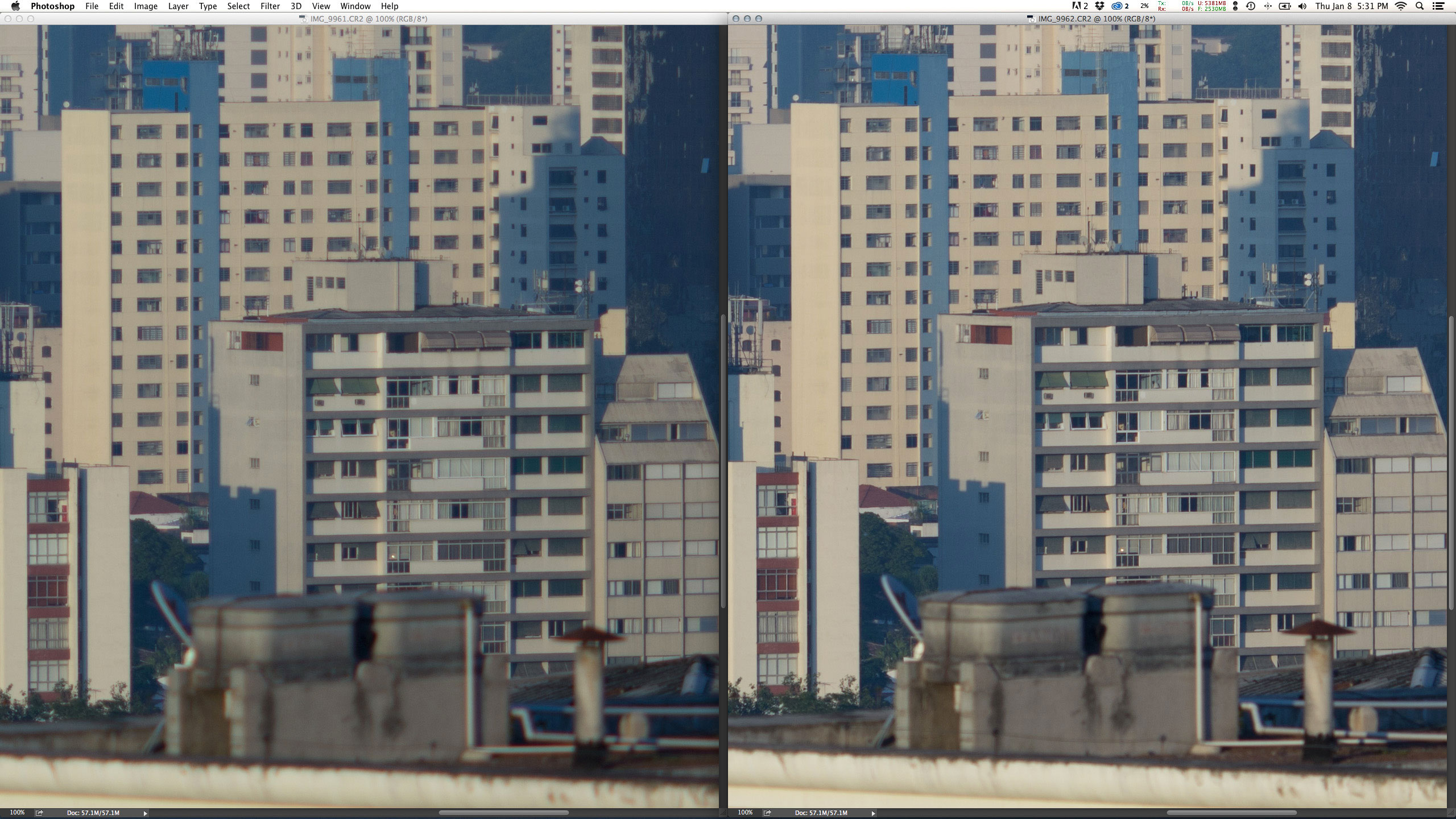
Both photos with the EF 135mm f/2L USM + Extender 2X III. Left: f/4 1/750 ISO100 @ 270mm. Right: f/8 1/180 ISO100 @ 270mm. This prime resolution is so, so high, that after the extender at optimised apertures the file is absolutely perfect. Proof the extender won’t diminish the IQ by itself.
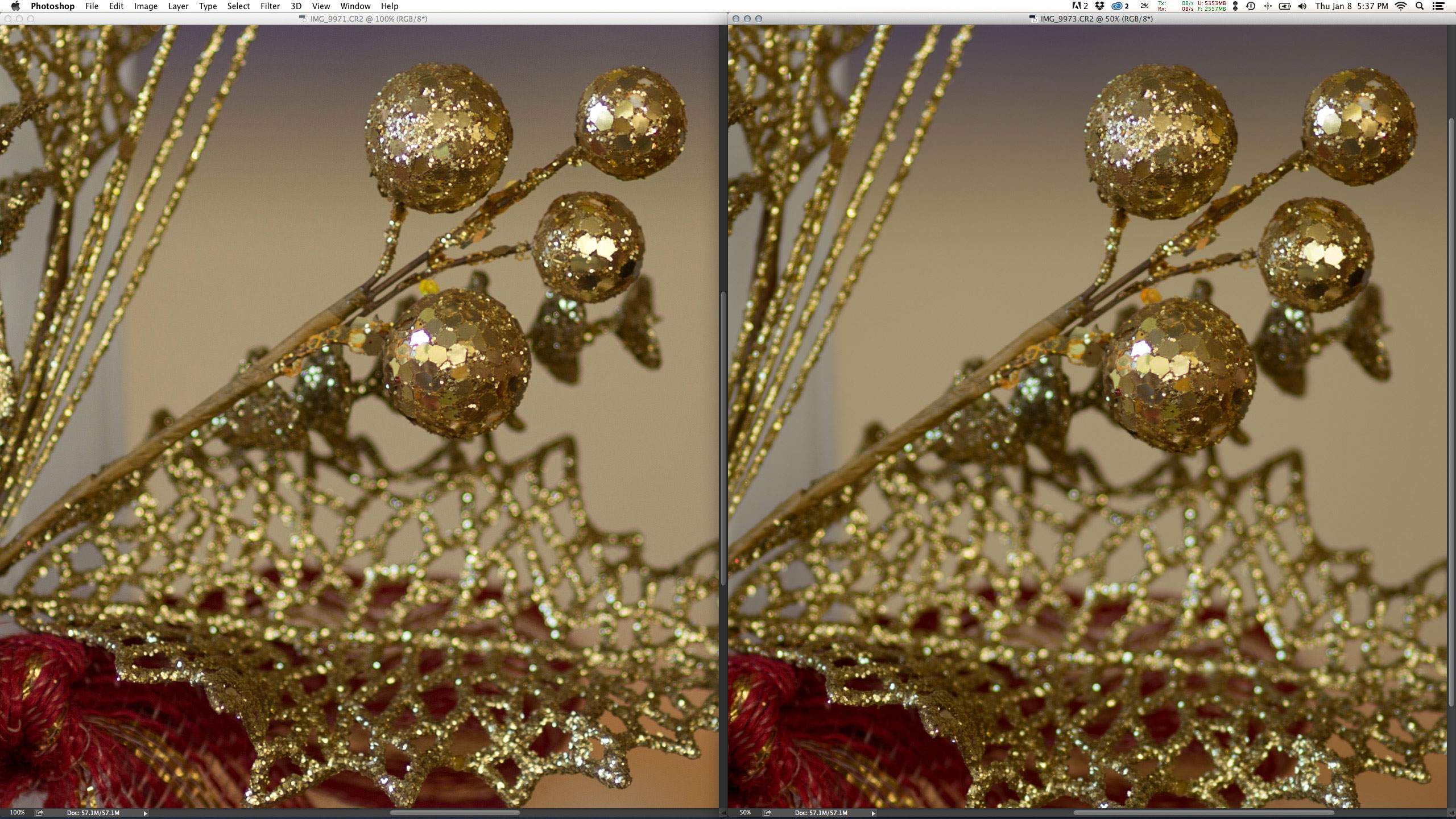
About the bokeh. Left: EF 135mm f/2L USM at f/2 1/90 ISO100 100% crop. Right: EF 135mm f/2L USM em f/4 1/20 ISO100 50% crop. Notice that after the magnification, “cancelled” by software at 50%, there’s no difference on the bokeh quality of the lens, as long as the distances remains the same.

The EF 100-400mm f/4.5-5.6L IS USM is compatible with the EF Extender 2X III for a long 800mm f/11 zoom. Yes, the aperture is very small and it’s manual focus only on any EOS body, except during Live View. But it’s totally worth it for such an absurd reach. Mount it on an APS-C camera and the 1280mm equivalence is enough to fill the frame with the moon. The IQ decline is obvious but relative if you’re using these files for web publishing or small prints. Stopping down to f/22 makes details sharper and it’s possible to slowly auto focus with contrast detection during Live View.
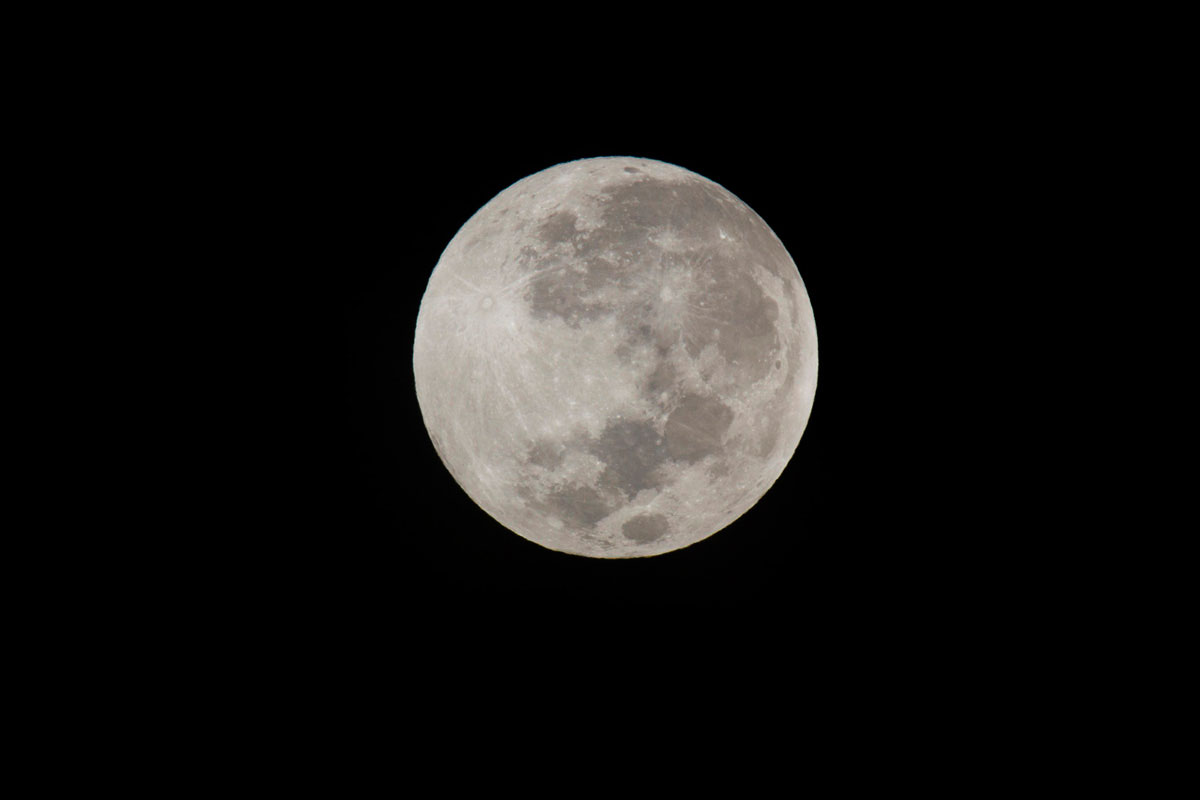
“Moon” with the EOS 60D + EF 100-400mm f/4.5-5.6L IS USM + Extender 2X III at f/19 1/90 ISO200 @ 800mm.
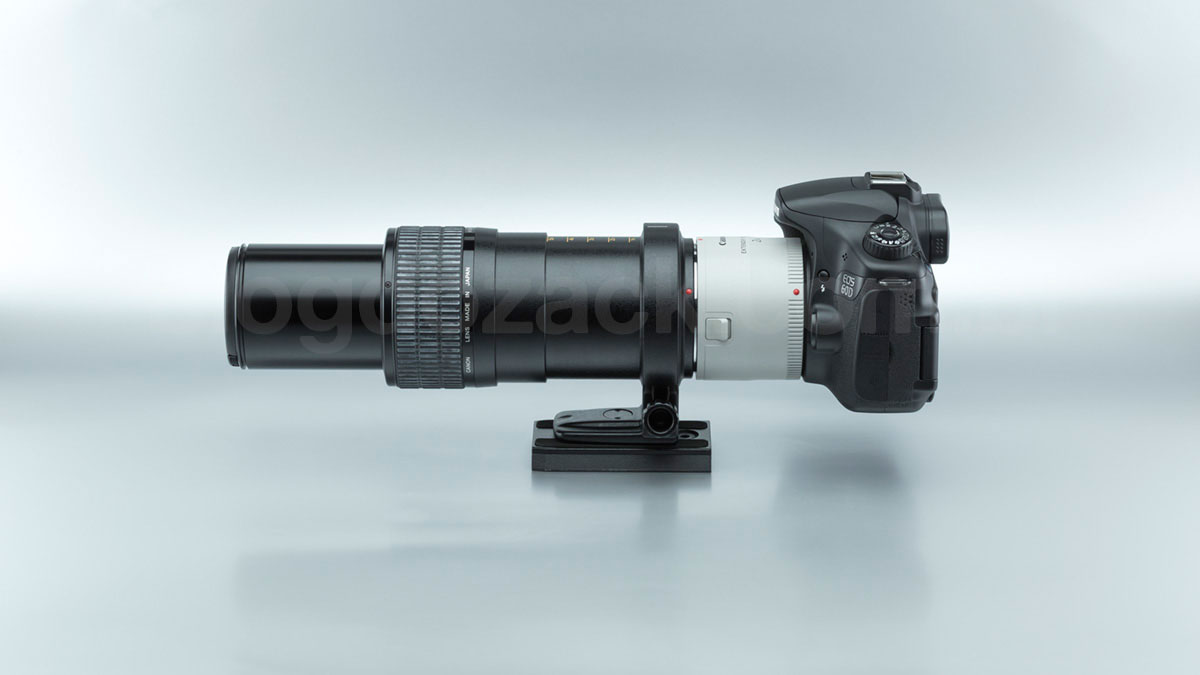
Canon MP-E 65mm f/2.8 1-5X + Extender 2X III.
Although not officially supported by Canon, some specialty lenses do mount on the EF Extender 2X III, like the 1-5X Macro MP-E 65mm f/2.8, for an awesome 2-10X! The optical viewfinder will be almost completely dark at 10X, but nothing the exposure simulation mode won’t handle. And forget the camera meter. It miscalculates the exposure by several stops and that’s why Canon won’t support it. But with manual exposure and some testing, we can get as close as a fly eyes!

“Yosemite” with the EOS 60D + EF 200mm f/2L IS USM + EF Extender 2X III at f/10 1/180 ISO160 @ 400mm.
An easy to use and optic and mechanically perfect accessory. It does what it promises without adding significant flaws to otherwise perfect images. With top of the line lenses the results are way better than digitally magnifying your files. But with older lenses it will depend if you’re printing.

“Mountain” with the EOS 60D + EF 200mm f/2L IS USM + EF Extender 2X III at f/8 1/125 ISO100 @ 400mm.
Everyday prints and some professional works will accept the impact from the extender, as modern cameras offer plenty of megapixels to make up for the lack of resolution. But for pixel peeping or fine art prints that require perfection, there no way around. The US$449 price tag won’t take you much farther than this. If you need maximum quality, stick to native lenses.